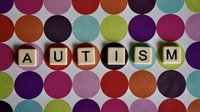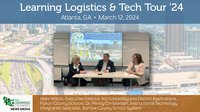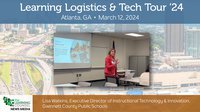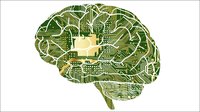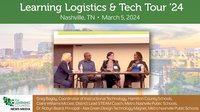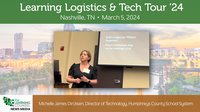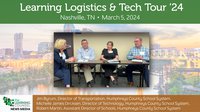Editor’s Note: This is part two of a five-part series (click here to first read part one)
According to the Community Schools Playbook, a project of the Partnership for the Future of Learning, “Many community schools stay open year-round, from dawn to dusk, and on weekends. The most comprehensive community schools are academic and social centers where educators, families, and neighbors come together to support innovative learning and to address the impact of out-of-school factors, such as poverty, racism, and violence, which can undermine the effectiveness of in-school opportunities. For example, a health clinic can deliver medical and psychological treatment, dental care, as well as glasses to nearsighted children, and inhalers for asthma sufferers. Extending the school day and remaining open during the summer enables the school to offer additional learning opportunities and supports, as well as co-curricular activities like sports and music—all of which are important enrichment experiences that can prevent summer learning loss; that is, the widening of learning gaps that happens when school is not in session.”
Even as you are reading this article, California is earnestly proposing a statewide community schools framework. According to the California State Board of Education January proposal agenda, “As a school improvement strategy, community school initiatives enable the local education agency (LEA) and school to work closely with educators, students, and families to understand and address the unique needs, assets, and aspirations of the school community. Community schools then design their own curricula and programs to support the whole child and partner with community-based organizations (CBO) and local government agencies to align community resources to realize a shared vision for success.”
The Community Schools proposal adds, “Recent events, such as the COVID-19 emergency, have forced districts and schools to rethink the direct connection between schools and families, and to examine the link between school and community services, including ways in which these links can be strengthened. Community school strategies can be an effective approach to mitigate the academic and social impacts of current events, improve school responsiveness to student and family needs, and to organize school and community resources to address barriers to learning.”
In a policy brief, Hayin Kimner wrote the following policy analysis for California Education, Stanford University. “Across California, the protracted disruptions to education because of COVID-19 have forced schools and communities to confront the inextricably basic link between health and education.
“Community school strategies have emerged as a promising approach to mitigate the social and learning impacts of COVID-19. Advocates describe community schools as a strategy to organize the resources of a community to address and eliminate barriers to learning: a place-based strategy in which schools partner with community agencies and allocate resources to provide an integrated focus on academics, health and social services, youth and community development, and community engagement.”
Kimner says, that Community schools are often seen as providing additional, nonacademic services to students most in need. Counselors, social workers, school nurses, and food banks are part of a support system designed to provide learners with whatever they need to succeed.
Community Schools work best when a collaborative spirit is pervasive, and all the community assets work together. In essence, Kimner illustrates how to connect the dots and writes, “To build and strengthen integrated student and teacher supports, schools and districts can:
- Integrate collective, individual student, and educator wellness check-ins to understand well-being as a regular part of distance and in-person learning, with an awareness of basic needs, feelings of anxiety and fear, stress, isolation, depression, and disengagement, as well as insufficient access to social-emotional support and mental health resources.
- Establish partnerships with mental health resources and providers to support teachers and students experiencing anxiety and stress with strategies and tools that support effective Tier 1 practices around individual and community care.
- Ensure there is a clear system for accessing student and teacher support that is collaboratively designed and implemented by students, teachers, families, and community partners.
- Create a robust and proactive school-based referral and professional learning/coaching system led by interdisciplinary school-based response teams, including experienced classroom teachers (general and special education), administrators, student support specialists, and family and community partners.
- Consider how distance learning may require more effective allocation of student support staff (e.g., school psychologists and specialists) to meet specific student and school needs across school campuses. Working across schools requires consistent and aligned intervention along with professional learning expectations and practices.”
Over 5000 schools in America are already considered as community schools. In an American Federation of Teachers publication, Is My School a Community School? A Checklist for Teachers and School Staff, the publication provides a checklist for key areas of collaboration, including Structure: School-Site Level Community School Strategy, Partners: Academic & Nonacademic, Instruction & Programming, School Culture & Climate, Family Engagement and Health and Wellness. “This checklist outlines the essential components of a community school,” says AFT. “It is important to note that not all community schools will have all these elements from the beginning. Building a community school is a process that requires patience, trust and collaborative partnerships among teachers, school staff, students, families, community partners, and administrators. If your school isn’t a community school yet, this inventory will help you identify areas you need to develop.”
According to the Community Schools Playbook, “Community schools are effective when they are comprehensive, research-based, locally owned, and designed in response to local needs and assets. Comprehensive community schools share a commitment to new ways of collaborating and sharing leadership, the use of research-supported practices, and a forging of powerful partnerships that define a community school.”
By definition, the power of community schools resides in the local community. It is the identification, structuring and connection of the many assets within the community, and goes far beyond academics to include the total needs of child, family, school staffulty (faculty and staff), business and faith communities. Everyone that makes up the community has a place in the workings of a community school. Think of it as a community center. A point from which everything flows outward.
Community schools are public schools with strong and intentional community partnerships ensuring pupil learning and whole child and family development, including the following features:
- Integrated student supports, which can support student success by meeting their academic, physical, social-emotional, and mental health needs.
- Family and community engagement, which involves actively tapping the expertise and knowledge of family and community members to serve as true partners in supporting and educating students.
- Collaborative leadership and practices for educators and administrators that establish a culture of professional learning, collective trust, and shared responsibility for outcomes in a manner that includes students, families, and community members.
- Extended learning time and opportunities that include academic support, enrichment, and real-world learning opportunities (e.g., internships, project-based learning).
Conclusion
Students in different communities have different needs, and assets differ from community to community. Therefore, community schools differ a great deal from location to location in their operation and the amenities they offer.
Even so, an ever-growing body of research informs us what is working and how these schools should be organized. The key point is they should be organized around the available community assets and local and state agencies. Local educators, families, business leaders, association members and faith communities should all take ownership and have a hand in the organization.
Best advice is to maximize local assets, including the talents of the citizens that reside there. It is very often surprising just how much talent and energy is readily available, and the amount of volunteerism that can be corralled when needed.
In the next installment
In our next installment, we’ll look at Community Schools and Technology. This may be the first time in history that the technology exists to make true community schooling a reality. We’ll explain what you need to know.
About the authors
James Stoffer is the Chief Executive Officer at Abre.io where he focuses on leading company growth, operations, and talent strategies. He has spent his entire career in the education industry, most recently at DreamBox Learning, successfully leading sales, customer experience, and business operations. Prior to DreamBox he also held leadership positions at Hobsons and MasteryConnect. His passion is helping scale social impact companies focused on improving the lives and futures of students and educators throughout the world. He has an MBA from Xavier University and BS in Marketing from Clemson University.
Zach Vander Veen has worn many hats in education, including history teacher, technology coach, administrator, and director of technology. He loves learning, teaching, traveling and seeking adventures with his family. Currently, Zach is the co-founder and VP of Development and Customer Success at Abre.io, an education management platform.



